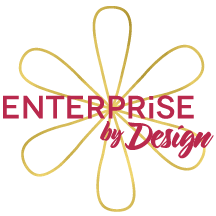I adore design books! Not only are they inspiring when I’m challenged for new ideas, but they’re a never ending source of research & education. I have shelves & shelves of them. I have no idea how much if spent on them over the years. I don’t really want to know! I love to curl up in a comfy chair & just flick through them … here are some of my favorites …

is my go-to colour bible. If you’re not clear on colour theory or you don’t have time to develop the perfect palette for a project you’ll find the simple solution here in this pocket book.
With over 1100 combinations the palettes are divided into sections: Active, Quiet, Progressive, Rich, Urban, Muted culture/era, Natural & Accent. Simply flick through, find the colours you want, view it as colour blocks or a pattern. You are then provided with CMYK (print) & RGB (digital) formulas.
You simply can’t get easier than that!

You’ll easily find the best colors for your project with chapters organized by dominant hue, and with unique expansion palettes—sets of four related hues arranged from dark to light—that allow you to explore even more color combinations for limitless possibilities.
The choices you make when designing your type can make or break your message. Thinking with Type, 2nd revised and expanded edition: A Critical Guide for Designers, Writers, Editors, & Students
by Ellen Lupton is the definitive guide to using typography in visual communication from the printed page to the computer screen.
This is a type book for everyone: designers, writers, editors, students, and anyone else who works with words. Although it is available for kindles, I far prefer print books when it comes to design inspiration.
“Immature poets imitate; mature poets steal; bad poets deface what they take, and good poets make it into something better, or at least something different.” ~ T.S. Eliot
Steal Like an Artist: 10 Things Nobody Told You About Being Creative is Austen Kleon talking to his younger self. The chapters are amusingly titled ‘Write the book you want to read’ & ‘Don’t wait until you know who you are to get started’ & ‘Be nice (the world is a small town)’ … this is my downtime read.
The Steal Like an Artist Journal: A Notebook for Creative Kleptomaniacs
is the next step in your artistic journey. It combines Austin Kleon’s unique & compelling ideas with the physical quality that makes journals like Moleskines so enormously popular. Page after page of ideas, prompts, quotes, and exercises are like a daily course in creativity. There are lists to fill in—Ten Things I Want to Learn, Ten Things I Probably Think About More Than the Average Person. Challenges to take. Illustrated creative exercises—Make a Mixtape (for someone who doesn’t know you) & Fill in the Speech Balloons. Pro and con charts—What Excites You?/What Drains You?
Picture This: How Pictures Work
by Molly Bang is the visual communication must have.
Everyone knows that a picture tells a thousand words. But what about the elements that make up a picture? Using the tale of Little Red Riding Hood as an example, Molly Bang uses boldly graphic artwork to explain how images—and their individual components—work to tell a story that engages the emotions: Why are diagonals dramatic? Why are curves calming? Why does red feel hot and blue feel cold?
The potential of the human brain is phenomenal, and Tony Buzan has been a pioneer in researching that potential and helping people learn how to make the most of their brainpower. The Mind Map Book: How to Use Radiant Thinking to Maximize Your Brain’s Untapped Potential
is his most important and comprehensive book on the subject. It offers exciting new ways of using and improving memory, concentration, and creativity in planning and structuring thought on all levels, in order to accelerate the ability to learn, remember, and record information.
I used to think I knew how to mindmap … until I came across this book which explained in detail how to use them to greatest effect. I mindmap client meetings, presentations, proposals, books, speeches – even my holidays.
Tell us, what is your favorite book that helps you with your visual marketing? Please comment below…











